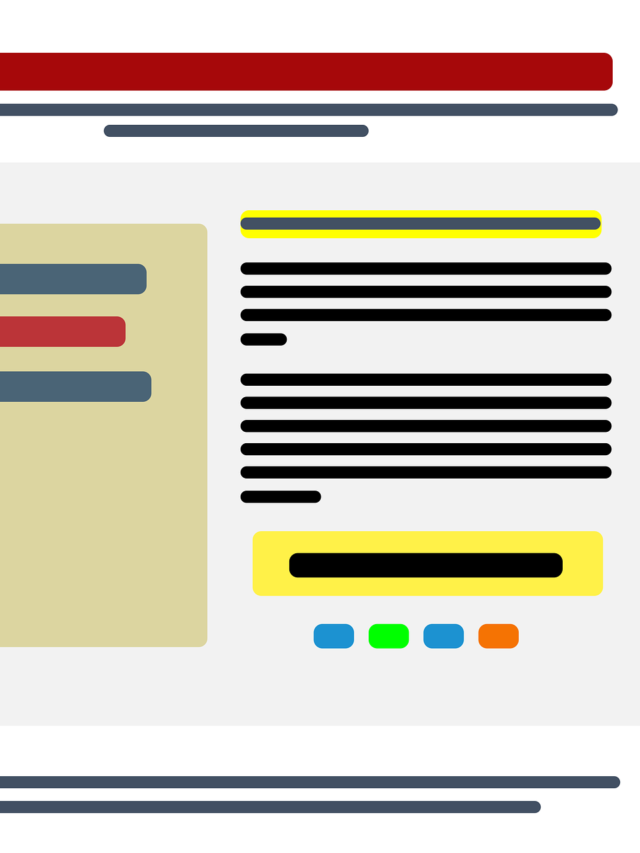Scale Content Abuse: Know The Meaning & How to Recognize It?

In today’s digital age, the internet is overflowing with content. From social media posts and blog articles to videos and images, the sheer volume of information is staggering. However, not all content is created with good intentions. Scale content abuse is a growing issue that everyone using the internet should be aware of. But what exactly is it, and how can you recognize it? Let’s break it down in simple terms.
What is Scale Content Abuse?
Scale content abuse refers to the manipulation or exploitation of content on a large scale to mislead, deceive, or harm users. This type of abuse can take various forms, including spreading misinformation, promoting scams, or manipulating algorithms to gain an unfair advantage. The primary goal is often to influence public opinion, generate profit, or cause harm to individuals or groups.
Common Forms of Scale Content Abuse
- Misinformation and Fake News: One of the most prevalent forms of scale content abuse is the spread of false information. This can include fake news articles, misleading headlines, or doctored images and videos designed to deceive people. For example, a fake news story might claim that a celebrity has died when they are actually alive and well.
- Clickbait: Clickbait is content created specifically to attract attention and encourage users to click on a link. While not always harmful, it often leads to low-quality or deceptive content. For example, a headline like “You Won’t Believe What Happened Next!” may lead to a story that has little to do with the headline, wasting your time and possibly exposing you to malicious websites.
- Scams and Phishing: Scammers use scale content abuse to spread fraudulent schemes. This can include fake emails, websites, or social media posts that try to trick you into providing personal information, such as passwords or credit card numbers. These scams are often disguised as legitimate offers or urgent messages.
- Algorithm Manipulation: Some content creators try to game the system by manipulating algorithms used by platforms like Google, YouTube, or Facebook. This can involve using bots to generate fake likes, shares, or comments, or creating content that artificially boosts its own popularity. The aim is to make the content appear more popular and trustworthy than it really is.
How to Recognize Scale Content Abuse?
Recognizing scale content abuse can be challenging, especially since it’s designed to look legitimate. However, there are several red flags you can watch out for:
- Check the Source: Always look at the source of the content. Is it from a reputable and trustworthy website or account? Be wary of unfamiliar sources or those with a history of spreading misinformation.
- Analyze the Headlines: Sensationalist or overly dramatic headlines are often a sign of clickbait or fake news. If a headline seems too outrageous to be true, it probably is.
- Look for Evidence: Trustworthy content usually provides evidence to support its claims, such as links to credible sources, quotes from experts, or data from reliable studies. If the content lacks evidence or relies on anonymous sources, be skeptical.
- Check for Bias: Be aware of content that shows clear bias or a hidden agenda. This can include politically charged articles that only present one side of an argument or commercial content that pushes you to buy something without offering balanced information.
- Use Fact-Checking Tools: Many websites and organizations are dedicated to debunking fake news and misinformation. Use tools like Snopes, FactCheck.org, or your platform’s own fact-checking resources to verify suspicious claims.
Why It’s Important to Recognize Scale Content Abuse?
Understanding and recognizing scale content abuse is crucial for several reasons:
- Protect Yourself: By identifying and avoiding deceptive content, you can protect yourself from scams, phishing attacks, and misinformation.
- Promote Truth: Sharing accurate and trustworthy information helps combat the spread of falsehoods and supports a healthier online environment.
- Make Informed Decisions: Reliable content allows you to make better-informed decisions, whether it’s about your health, finances, or understanding world events.
Scale content abuse is a significant issue in today’s digital world. By staying informed and vigilant, you can better navigate the internet and protect yourself from its harmful effects. Always think critically about the content you consume and share, and don’t hesitate to use the tools available to verify its authenticity.
FAQs on Scale Content Abuse:
Scale content abuse refers to the large-scale manipulation or exploitation of online content to mislead, deceive, or harm users. This can include spreading misinformation, promoting scams, or manipulating algorithms to gain an unfair advantage.
Clickbait refers to content designed to attract attention and encourage clicks, often through sensational or misleading headlines. While not always harmful, it can waste your time and sometimes lead to low-quality or deceptive content.
Scammers exploit scale content abuse to spread fraudulent schemes, such as fake emails, websites, or social media posts. These scams often aim to trick users into providing personal information like passwords or credit card numbers, by disguising themselves as legitimate offers or urgent messages.
Algorithm manipulation involves artificially boosting the visibility or popularity of content through tactics like using bots to generate fake likes, shares, or comments. This can distort the perceived popularity and trustworthiness of content, misleading users and skewing the online information landscape.
Yes, reporting scale content abuse can help. Social media platforms and websites often rely on user reports to identify and remove harmful content. By reporting suspicious or abusive content, you contribute to a safer and more reliable online environment.






